Could they be Constables? Three paintings tested at University of Bradford
Ground-breaking scientific tests aim to help establish if three further paintings by a famous artist have been uncovered.
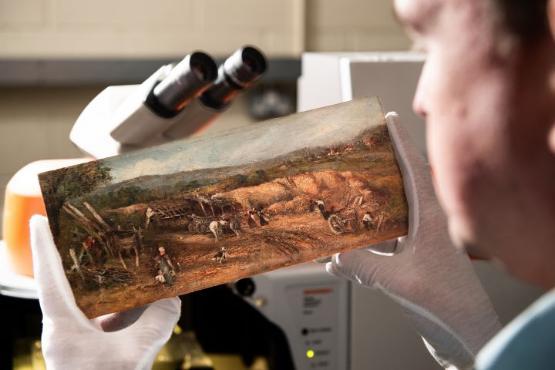
Pigments of three paintings are being tested and identified at the University of Bradford to find out if they could be by renowned 19th century artist John Constable.
Verification work on three oil paintings – ‘The Coming Storm’, ‘Norwich School – Locking-up with a horse drawn barge’ and ‘Sandpit’ – is being carried out by the university's School of Archaeological and Forensic Sciences to provide scientific evidence that they may be works by Constable. The work on the first of the three paintings has been completed, with a report on ‘Norwich School – Locking-up with a horse drawn barge’, published in 2021.
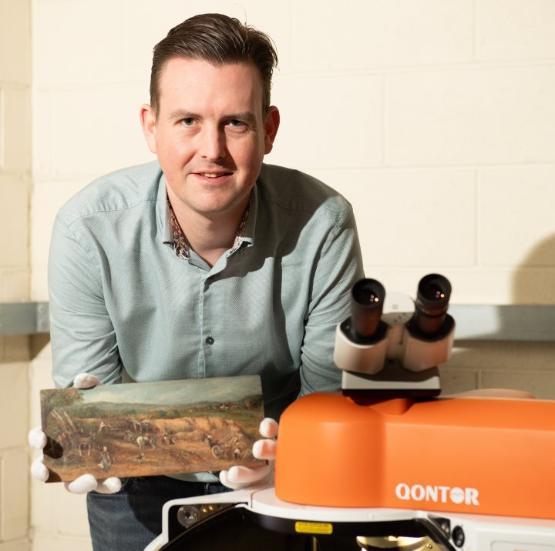
‘Sandpit’ is the latest of the works to be tested by Dr Alex Surtees, Lecturer in Forensic Science at the University of Bradford. The painting is being analysed using the university’s Raman spectroscopy, Fujifilm NewTom CT scanner and 3D microscopy equipment.
The new tests included X-ray Fluorescence (XRF) utilising equipment funded by the Arts and Humanities Research Council (AHRC) ‘Capability for Collections’ scheme. He is using the equipment to forensically test the pigments of the painting.
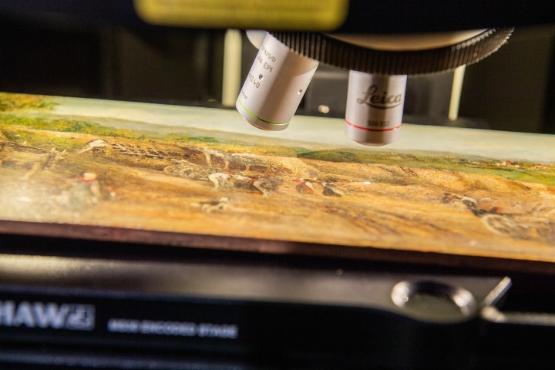
‘Sandpit’ shows a scene from Henfield, a market town in West Sussex, featuring a rural landscape in the foreground with labourers working among animals, while the painting’s background shows hills and a blue sky.
Constable was best known as a renowned landscape artist, particularly his works of Denham Vale National Landscape, an Area of Outstanding Natural Beauty located on the Essex-Suffolk border, which was near his home. He died aged 60 in 1837.
Dr Surtees carried out preliminary tests on ‘Sandpit’ in summer 2023 with further analysis taking place in March and April this year. He says he has already identified the pigments as being of the correct era, in part due to the techniques used to create the artwork.
He says he cannot categorically prove himself that the paintings are by Constable. But the scientific techniques Dr Surtees is using can provide the identity of the pigments used in the paintings, which gives evidence leading to who its artist may have been.
Once completed, the tests and data findings from ‘Sandpit’ will be given to the painting’s UK-based private owners this summer. Dr Surtees’ findings will be presented by the owner to experts in John Constable’s work from the art world, in a bid to discover if the painting can be verified as a Constable piece.
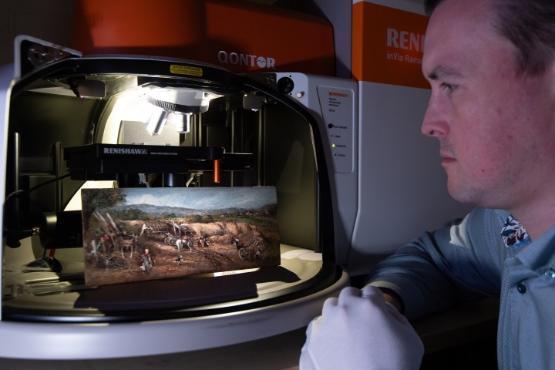
Dr Surtees said: “We are trying to provide more scientific evidence.
“With ‘Sandpit’, we are setting up the process. We are able to apply more techniques.
The tests themselves are very quick. It depends on the findings, a couple of weeks doing the tests and then it will take a couple of months analysing the data. The package of data will then be presented to the Constable experts.
“I am looking to identify the pigments. The painting features the sort of pigments that John Constable would have used on his palette.
“Through CT scanning we aim to find evidence of overwork on the painting. It is very much like forensic science testing. I am looking to prove that they could not have done it, rather than prove that they did it. We can come up with verified data.
“We can’t prove if the paintings are by John Constable, or not, that is up to the experts.
“It is certainly a ground-breaking combination of techniques, even for traditional scientific tests. Using the CT scanner is the same type that a person would be scanned through in a hospital.
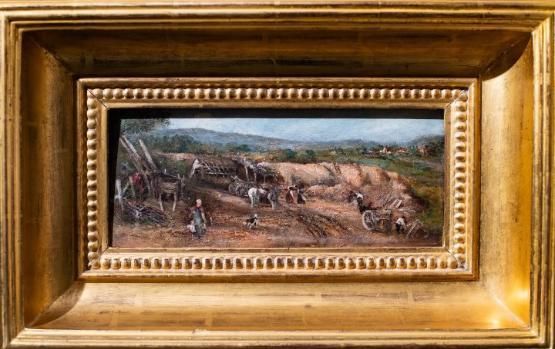
“With the naked eye you can recognise brushstroke work, but you can’t age things through the naked eye. You need technology for that. I can identify these pigments. We are trying to make the art verification process more objective. There is always subjectivity in it.
“Ultimately, it is down to the experts’ verification."
Dr Surtees says he is proud to be part of the work using forensic scientific techniques to help identify if John Constable is the artist behind these three paintings.
He added: “It’s certainly very exciting. I am proud to be recognised as someone who has the scientific expertise to do it. If I can be involved in the actual verification on work being a Constable, then I would be very proud. This is me helping the art world make a decision."
‘Norwich School – Locking-up with a horse drawn barge’ is owned by the de Brecy Trust, while ‘The Coming Storm’ and ‘Sandpit’ belong to private owners.
Meanwhile, some experts have accepted Dr Surtees’ analysis on ‘The Coming Storm’ but questioned whether the painting is by John Constable or his son Lionel.
The younger Constable, Lionel Bicknell, was an accomplished artist himself, particularly landscape paintings, and also worked as a photographer. He had a similar style of work to his famous father. Lionel died aged 59 in 1887.
Dr Surtees, who previously worked as an analytical chemist, said: “We are a lot further along with ‘Coming Storm’. I am hoping that by testing the pigments I can find a point of difference between father and son, thus providing evidence that this may be a new piece of art by John.
“I am relatively confident that it is of the right period, but was it a John, Lionel or apprentice learning under John Constable, using the same pigments or same style?"
These tests to prove if the three paintings are Constables are the latest artwork examinations using new technology at the University of Bradford.
Artificial Intelligence analysis at the university discovered a Raphael painting features a face not created by the famous Renaissance artist.
An algorithm created by Professor Hassan Ugail, Director for Visual Computing and Intelligent Systems at the University of Bradford, tested the Madonna della Rosa (Madonna of the Rose).
The deep feature analysis concluded that the face of Joseph featured in Raphael’s work was not completed by the artist himself. Prof Ugail’s findings were published in a peer-reviewed paper in December 2023. The Madonna della Rosa hangs in Museo del Prado, Madrid, Spain.
